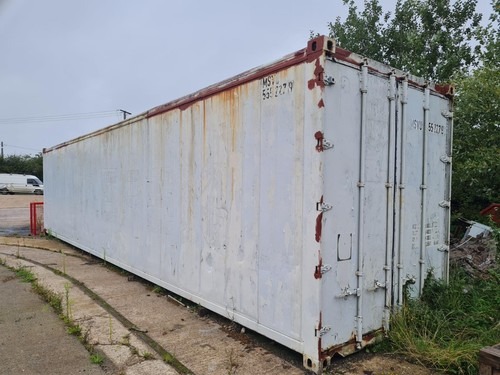Searching For Inspiration? Check Out New Shipping Containers
New Shipping Containers: Revolutionizing the Logistics and Supply Chain Industry
Shipping containers have become the backbone of global trade, making it possible for the effective transport of goods across countries and continents. As cogcontainersltd.com and supply chain requires progress, so too do shipping containers. This blog site post will check out the significance of new shipping container designs, developments, and their effect on the industry.
The Evolution of Shipping Containers
Shipping containers have come a long way given that their creation in the 1950s. Initially made of steel, the design has broadened to include numerous products, sizes, and functionalities to meet growing needs for performance, security, and sustainability.
Key Innovations in New Shipping Containers
Innovation
Description
Advantages
Refrigeration Technology
Advanced insulation and cooling systems.
Ideal for disposable products, extending life span.
Smart Containers
Geared up with GPS tracking, temperature sensing units, and RFID technology.
Real-time tracking of cargo conditions and location.
Green Containers
Made from sustainable products and designed for energy performance.
Lowered carbon footprint and environmental effects.
Modular Containers
Permits versatile reconfiguration for diverse cargo types and sizes.
Increased flexibility and optimized area utilization.
High Cube Containers
Taller than basic containers, offering more volume within the same footprint.
Greater storage capability for large cargo.
Types of New Shipping Containers
New shipping containers been available in numerous types, each engineered for particular transport needs. Here's a list of the most common types:
- Standard Dry Containers: The most typical type, used for general cargo.
- Reefer Containers: Temperature-controlled containers for disposable products.
- Open Top Containers: Designed for oversized cargo that can not fit through basic doors.
- Flat Rack Containers: Used for heavy loads or devices that need to be secured from above.
- Tank Containers: Specialized for transporting liquids, such as chemicals and foodstuff.
- High Cube Containers: Providing extra vertical area for bulkier items.
Advantages of Using New Shipping Containers
Making use of new shipping containers provides numerous advantages to services and the supply chain. Some benefits consist of:
- Enhanced Security: Modern containers are constructed with advanced locking systems, decreasing the risk of theft and damage.
- Increased Efficiency: Smart containers enable real-time tracking, improving logistics management and decreasing hold-ups.
- Sustainability: Innovations in products and energy performance assistance lessen the environmental effect of shipping activities.
- Cost-Effectiveness: Reducing waste and enhancing cargo area lowers transport expenses over time.
- Versatility: Different container types and setups deal with a vast array of industries and products.
The Impact of New Shipping Containers on Global Trade
The introduction of new shipping containers has dramatically affected international trade practices. According to a report by the Global Maritime Forum, the effectiveness gains from the adoption of new shipping containers have lowered shipping times by as much as 30% sometimes. Additionally, the development in e-commerce has actually increased the need for numerous shipping container types, resulting in development and competitors amongst shipping business.
Metric
Pre-New Shipping Containers
Post-New Shipping Containers
Average Shipping Time
4-6 weeks
2-4 weeks
Cargo Damage Rate
10%
2%
Fuel Efficiency
Differs
As much as 10% savings
Cost Per Shipment
₤ 2000
₤ 1500
Carbon Footprint (Estimated)
High
20% lower
Frequently Asked Questions (FAQs)
Q1: What materials are modern-day shipping containers made from?A1: Modern shipping containers are mostly made from high-strength steel however can also incorporate new products like fibreglass and environmentally friendly composites. Q2: How can I track my cargo with a new shipping container?A2: Many new shipping containers come geared up with wise innovation that includes GPS tracking and RFID. These permit carriers to keep track of the location and condition of the cargo in real-time. Q3: What types of cargo advantage most from refrigerated containers?A3: Perishable items such as fruits, veggies, dairy, meat, and pharmaceuticals benefit substantially from refrigerated containers, supplying the necessary temperature level control to maintain product integrity. Q4: Are there any ecological guidelines surrounding the use of shipping containers?A4: Yes, various global guidelines govern emissions from shipping and the materials used in container construction.
The International Maritime Organization(IMO) promotes cleaner shipping by introducing policies for carbon emissions, motivating using green containers. Q5: Will new shipping container innovation lead to greater shipping costs?A5: While initial investment in new technology may be greater, the performances acquired from lowered shipping times, lower cargo damage rates, and optimized fuel intake frequently result in
**general cost savings for companies in time. The shipping container market is undergoing an essential improvement, with developments leading the way for a more efficient, protected, and sustainable future. By understanding the improvements and types of containers available, services can make informed decisions that
boost their supply chain operations. As the worldwide marketplace continues to grow, so does the requirement for transport solutions that satisfy modern needs. The evolution of new shipping containers is not simply a pattern; it's an essential part of the logistics and supply chain landscape.  **
**